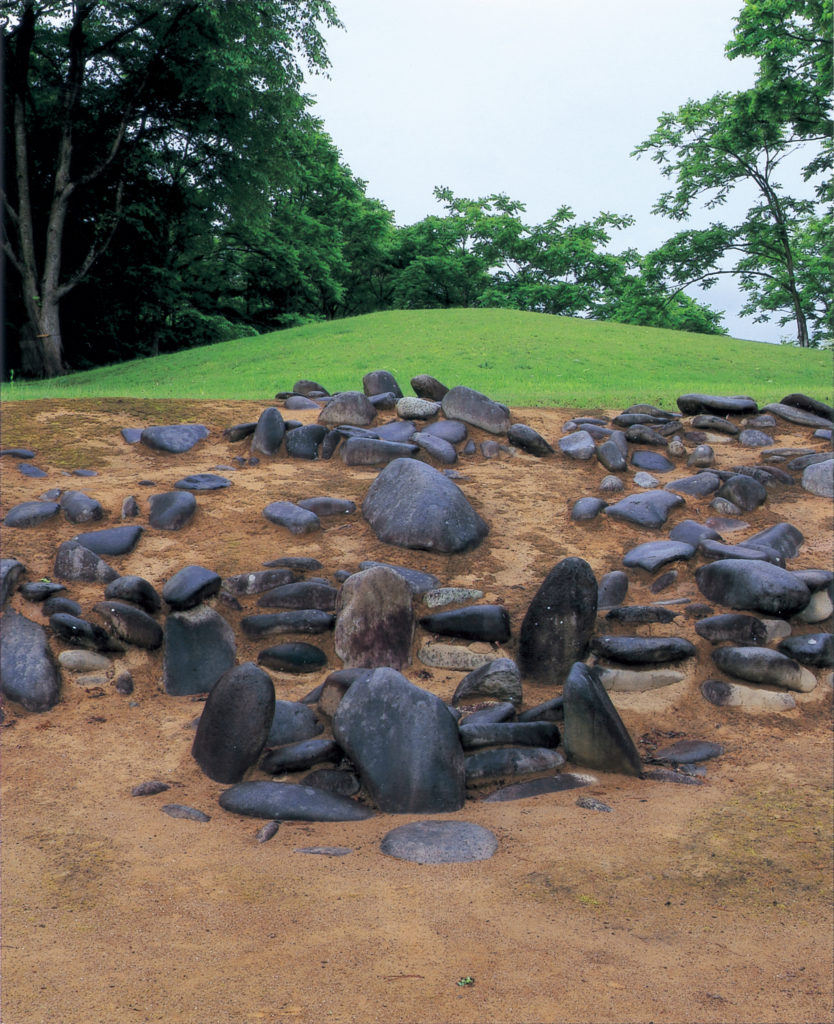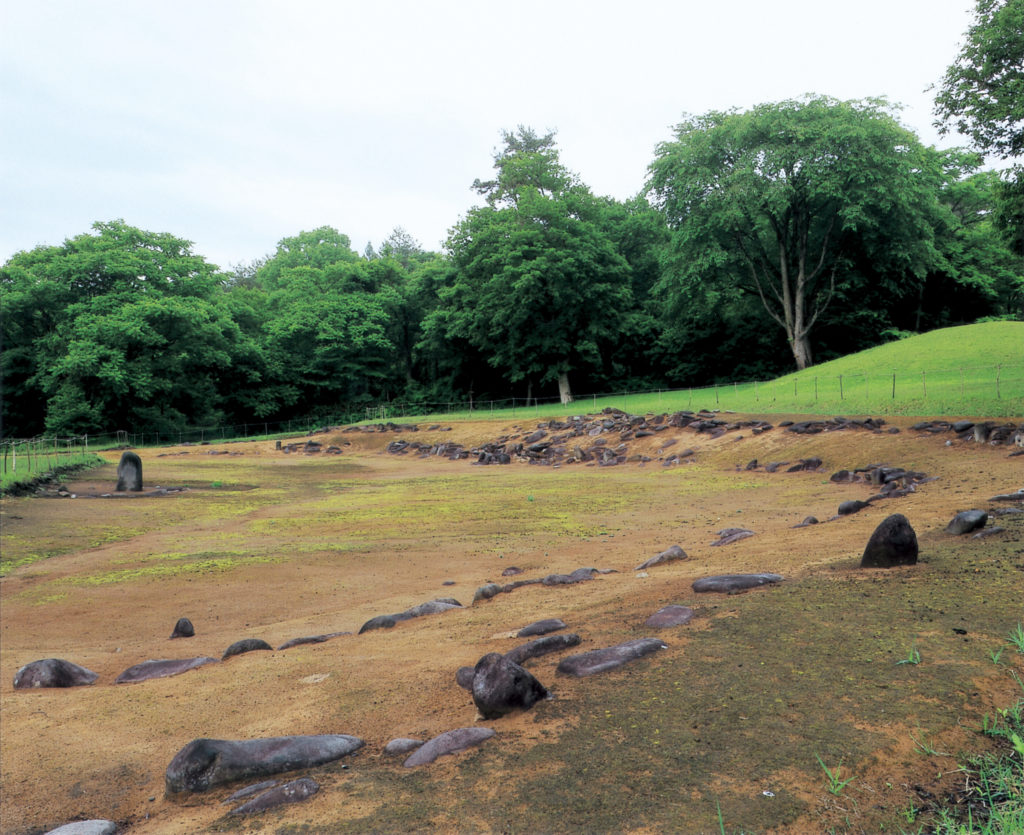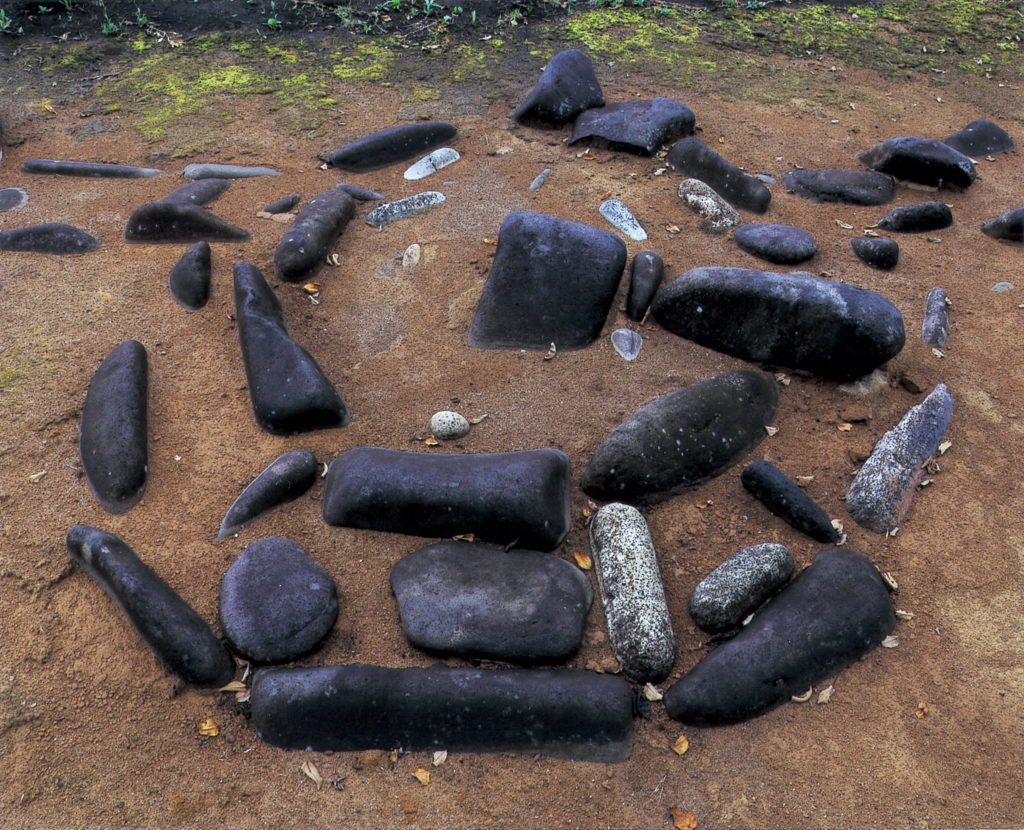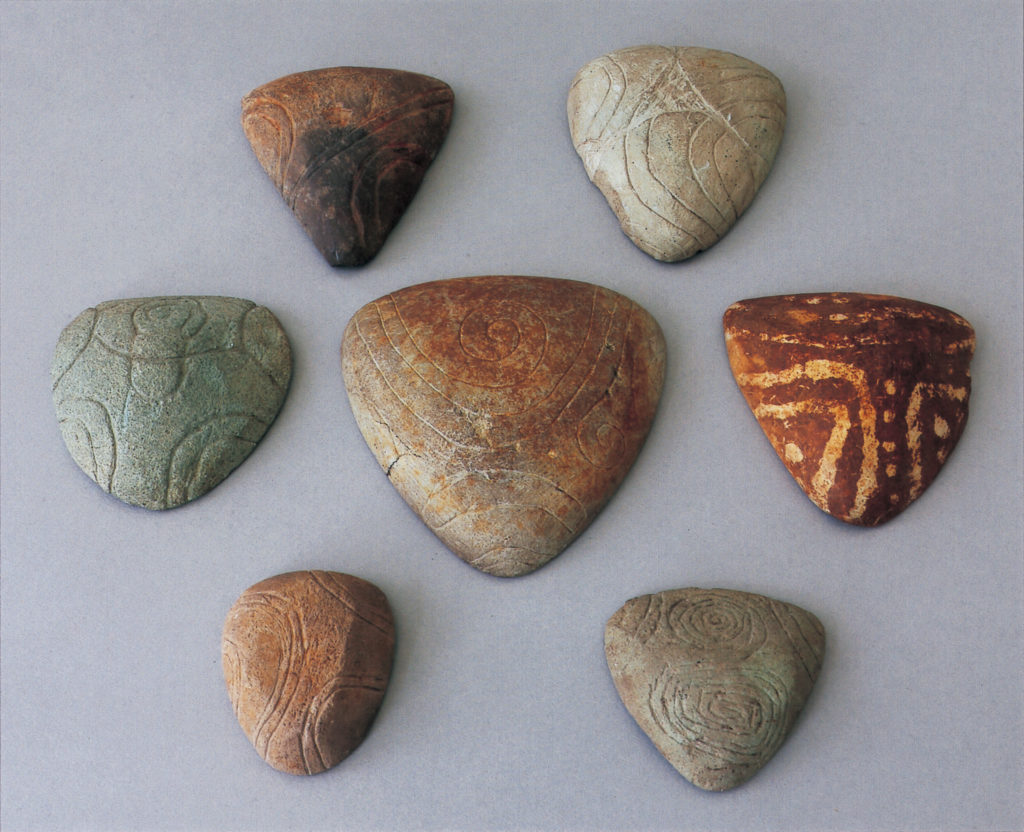Stone Circle and the Jomon Concept of Time
The sound of the mid-June rain trickled in my ears as I made my way toward the verdant forest. I had left the humidity of Tokyo and arrived in Aomori Prefecture, where the rain was just letting up and yet the air felt light and clean. After a while, I entered the city center. The signboard of a wholesale market lured me to quench my appetite with fresh seafood, but I resisted the temptation and drove on to the district of Nozawa. The asphalt streets gave way to dirt roads in no time, and when there was nothing but tender green foliage as far as the eye can see, I stopped the car. The grass growing underfoot was still young and fresh, although spring was transitioning to summer day by day. A few steps away from the city and into the forest is all it takes for us tiny beings to be absorbed and woven into the fabric of nature.
In the foothills of the Hakkoda Mountains is an area named Komakino, for it served as a “small pasture” for horses in the Edo period (1603–1868). I was walking through the area now because I had learned that 25 years ago, a group of high school students and a teacher excavated an archaeological site dating back to the first half of the Late Jomon (approx. 4,000 years ago). The Komakino Site is sandwiched between the Arakawa River and the Nyunai River on a plateau 145 meters in elevation. I met my guide, Mr. Kodama from Aomori City’s board of education, and together we headed first and foremost for the stone circle.

A sigh of admiration escaped me. The stones were arranged in immaculate circles in an open space on a slope in the forest. A nearby viewing area, built with soil from the excavation work, afforded more or less a bird’s-eye view. One stone stands upright in the center, and from there, three rings formed with stones from the river ripple outward. The entire monument measures 55 meters in diameter, suggesting it was designed for large gatherings.
“The Jomon people chose this location and built the stone circle over a considerably long period of time.”
“How long?”
“Possibly 200 years.”
“Construction work went on for as long as 200 years?”
“That’s right,” said Mr. Kodama. “One theory says completion was never the goal. It could have been more important to continue using this space for purposes like burials, religious rituals, and other services.” Evidently the concept of time differs greatly between the Jomon people and us today.

The process of construction itself, rather than the outcome, seems to have been the main objective of the Komakino Site. What’s more, I couldn’t help detecting a spirit of appreciation for the beauty of unfinished work. Excavation of the surrounding area has produced relics such as burial pits, storage pits, and beautiful triangular stone plates, but curiously not a whole lot of dwellings. This makes one wonder how far the people traveled to gather here.
We climbed atop the viewing area once again, and Mr. Kodama told me that on a fine day, the view of Mutsu Bay comes complete with the Shimokita Peninsula on the west, the Tsugaru Peninsula on the east, and sometimes even Hokkaido to the far north. This may have been an ideal spot for communicating with people across the bay.

The next morning, I woke up at four-thirty and was drawn to the site at dawn. Recalling the stories I had heard the day before, I walked around the area barefoot with the hope of getting a direct feel of the sacred space. Only then did I notice that the stone circle was built on a gradient, similarly to an amphitheater. The stones stacked vertically and horizontally in turn, or arranged like an altar, appeared even sleeker and brighter than yesterday. Soon I realized I had the drizzling rain to thank. When damp, the stone circle seemed to be enveloped in a lustrous black aura of mystery.
<PAPERSKY no.42(2013)>

Jomon Fieldwork | Nao Tsuda × Lucas B.B. Interview
A conversation between ‘Jomon Fieldwork’ Photographer and writer Nao Tsuda and Papersky’s Editor-in-chief Lucas B.B. The two discuss the ways Jomon culture continues to play an important role in modern day Japan. The video was filmed at Papersky’s office in Shibuya in conjunction with Tsuda’s exhibition “Eyes of the Lake and Mother Mountain Plate” held at the Yatsugatake Museum in Nagano.
Nao Tsuda | Photographer
Through his world travels he has been pointing his lens both into the ancient past and towards the future to translate the story of people and their natural world.
tsudanao.com











